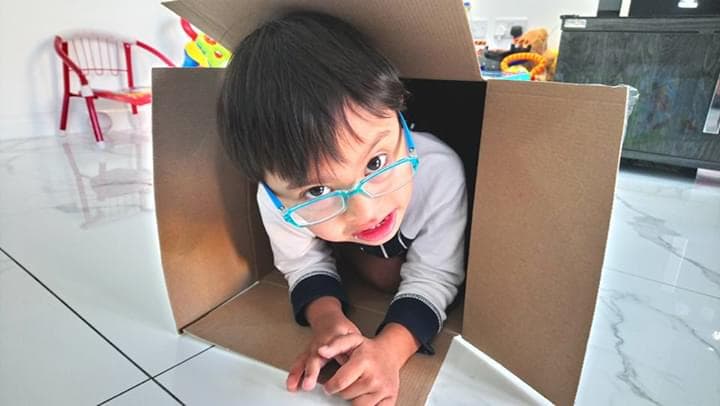Laxatives for children with Down syndrome: a complete parent’s guide
- by June Rogers MBE
Constipation is a common challenge for children with Down syndrome, affecting their comfort, health, and overall quality of life. If your child has been prescribed laxatives by a healthcare professional, understanding how these medications work and how to use them safely is crucial for effective treatment.
Understanding laxatives
Laxatives are medications specifically designed to treat constipation by helping your child’s body pass stool more easily. While they’re an important tool in managing digestive health, they should always be prescribed by a healthcare professional who can determine the right type and dosage for your child’s specific needs.
There are two main categories of laxatives, each working differently to address constipation:
Softener laxatives (osmotic laxatives)
Softener laxatives work by drawing water into the stool (poo), making it softer and easier to pass. They also help lubricate the digestive tract, reducing discomfort during bowel movements. These are often the first line of treatment for childhood constipation.
Stimulant laxatives
Stimulant laxatives are absorbed into the body and work by stimulating the muscles in the bowel, increasing peristalsis (the natural wave-like muscle contractions that move stool through the intestines). These are typically used in combination with softener laxatives when softeners alone fail to resolve the constipation or they may be given on their own
Softener laxatives: your first line of defense
Macrogols (Brand Names, Movicol, Laxido, CosmoCol)
Macrogols are among the most commonly prescribed laxatives for children and are particularly effective for long-term management of constipation.
How to administer macrogols:
- Mix each sachet with at least 62ml of water first.
- Once mixed with water, you can add small amounts of milk, yogurt, or juice to improve taste if necessary.
- Always mix with water first – adding other liquids before water can reduce effectiveness.
- Give at the same time each day for consistency.
- The dose can be divided if your child can’t take it all at once.
- Once prepared, the mixture can be refrigerated for up to 24 hours.
How macrogols work: Macrogols create a unique mechanism of action. The water used to mix the medication stays “locked” within the stool as it forms. This keeps the stool soft and well-lubricated while also increasing its bulk. The larger, softer stool naturally stimulates the bowel’s peristalsis, encouraging regular bowel movements without harsh stimulation.
Important timing information:
- Macrogols can take up to 72 hours to start working when first given
- Must be given daily – don’t stop and start intermittently
- The dose may be gradually reduced as constipation improves
- The water used to make up macrogols doesn’t count toward your child’s daily fluid intake as it’s not absorbed by the body
For more detailed information about how macrogols work, the Bladder & Bowel UK Understanding Macrogol Laxatives guide provides comprehensive technical details.
Lactulose (Brand Name: Dulphulac)
Lactulose is a synthetic sugar that works as a gentle softener laxative.
How to administer lactulose:
- Can be given up to three times per day as prescribed.
- Can be mixed with small amounts of water to reduce the very sweet taste.
- Encourage regular fluid intake throughout the day to help lactulose work effectively.
How lactulose works: This man-made sugar draws water into the large bowel (colon), softening the stool naturally. Because it works by drawing water into the bowel, maintaining good hydration is essential for lactulose to be effective.
Potential side effects to monitor:
- May cause excessive gas and bloating when first started.
- Can cause some discomfort initially as the body adjusts.
- Contains small amounts of sugars including lactose – use with caution if your child has lactose intolerance.
Stimulant laxatives: when additional help is needed
Senna (Brand Name: Senokot)
Senna is a natural stimulant laxative derived from the senna plant.
How to administer senna:
- Typically works within 8-12 hours (though can take longer).
- Often given in the evening to produce a bowel movement the next morning.
- Give the full dose at once – don’t divide it throughout the day.
- Timing can be adjusted (such as giving in the morning) to produce bowel movements at more convenient times, like outside school hours.
How senna works: Senna contains naturally occurring chemicals that stimulate the nerves in the colon, causing the bowel muscles to contract more strongly. This increased peristalsis helps push stool along toward the rectum.
Sodium picosulphate (Brand Names: Dulpholax Pico, Laxoberal)
This is another stimulant laxative that works slightly differently than senna.
How to administer sodium picosulphate:
- Usually works within 6-12 hours.
- Often given at bedtime for morning results.
- Follow your healthcare provider’s specific timing instructions.
How sodium picosulphate works: this medication undergoes a chemical process when it reaches the large bowel, where bacteria convert it into an active compound. This compound stimulates nerve endings in the bowel, increasing muscle contractions and helping move stool toward the rectum.
The typical treatment approach
Healthcare professionals usually follow a systematic approach when treating constipation in children, as outlined in the NHS England National Clinical Constipation Pathway:
- Start with a softener (typically macrogols) as the first-line treatment.
- Add a stimulant laxative if the softener alone isn’t sufficient.
- Continue treatment for several weeks or months after symptoms resolve.
- Gradually reduce dosage as the bowel recovers and normal function returns.
Critical Guidelines for Parents
Never stop abruptly
Don’t discontinue laxatives unless specifically advised by your healthcare professional. Stopping too early can lead to a return of constipation and may require starting treatment over again.
Extended treatment is normal
If your child has been constipated for more than a few days, expect to continue laxative treatment for several weeks or months after the problem appears resolved. This extended treatment allows the bowel to fully recover and prevents relapse.
Follow professional guidance
Always follow your healthcare professional’s specific advice regarding:
- which laxative to use,
- proper dosage for your child’s age and weight,
- timing of administration,
- duration of treatment,
- and when and how to adjust doses.
Monitor and communicate
Keep track of your child’s bowel movements and any side effects. Regular communication with your healthcare provider ensures the treatment plan remains effective and appropriate.
Additional considerations for children with Down syndrome
Children with Down syndrome may face unique challenges with constipation due to:
- lower muscle tone affecting bowel function,
- dietary preferences or restrictions,
- other medical conditions,
- and medication side effects.
Constipation is particularly common in children with Down syndrome due to factors including poor muscle tone, reduced mobility, diet, and poor fluid intake. For comprehensive information about constipation specifically in children with Down syndrome, visit Down Syndrome UK’s constipation resources.
The Down Syndrome Medical Interest Group (DSMIG) provides detailed medical guidance on gastrointestinal problems in Down syndrome, noting that treatment for constipation follows the same principles as for the general population.
Working closely with healthcare professionals who understand these specific needs is essential for developing an effective, long-term management strategy.
When to seek additional help
Contact your healthcare provider if:
- laxatives aren’t working after the expected timeframe,
- your child experiences severe side effects,
- there are changes in your child’s overall health or eating habits,
- or you have concerns about the treatment plan.
Resources for further information
For additional information about constipation and bowel health, consult:
- Your child’s pediatrician or specialist.
- Bladder & Bowel UK – comprehensive bowel health resources.
- Down Syndrome UK Health and Constipation.
- NHS constipation in children guidance – general NHS advice on childhood constipation.
- Nice Guidance Constipation in Children.
- NICE Laxative for children prescribing information
- ERIC (Education and Resources for Improving Childhood Continence) – specialist charity for childhood bowel and bladder problems.
- Down Syndrome Medical Interest Group (DSMIG) – medical professional guidance on gastrointestinal issues in Down syndrome.
Remember, managing constipation in children with Down syndrome often requires patience and consistency. With proper medical guidance and the right treatment approach, most children can achieve regular, comfortable bowel movements and improved quality of life.
This information is for educational purposes and should not replace professional medical advice. Always consult with your child’s healthcare provider before starting, stopping, or changing any medication regimen.
Share this post
Author
 Specialist Children’s Bladder & Bowel Nurse
Specialist Children’s Bladder & Bowel NurseJune Rogers worked as a Specialist Children’s Bladder & Bowel Nurse for over 35 years. With a special interest in children with physical and learning disabilities, June has presented and published widely as well as winning several Awards for her work, including an MBE in 1997. More recently she won the 2024 BJN Continence Nurse of the Year. Working at a National level June was involved in several NHRI studies, NHS working groups and NICE Guidelines and Quality Standards, including Childhood Constipation. Now retired June is working with DSUK Positive About Down syndrome (PADS) developing resources and supporting families to manage continence problems more effectively.
View all posts









